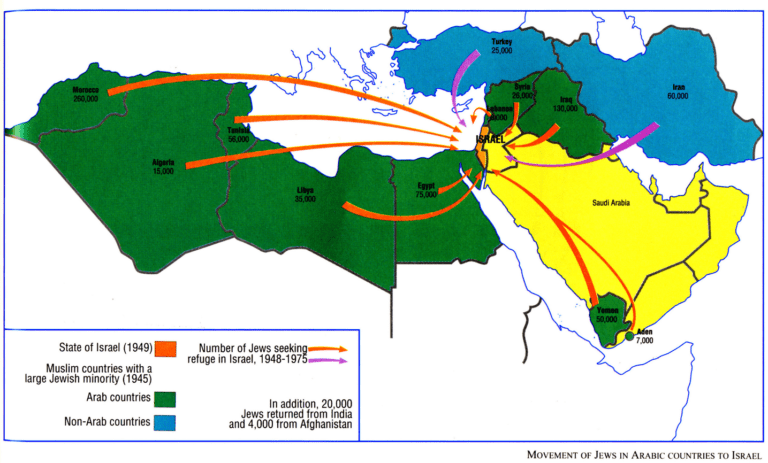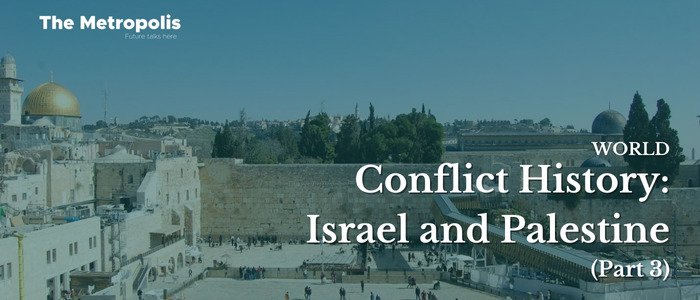Mohammad Tanvir Hossain –
The Israel-Palestine conflict is one of the most complicated and divisive issues in the world today, which started as a regional conflict one hundred years ago. a struggle for the same territory between two quite dissimilar parties. It has national, political, geographical, cultural, and religious roots. Israelis and Palestinians both want the same thing: land. To better understand its reasons and underlying issues, let’s retrace the Israeli-Palestinian conflict through a historical journey.
Creation of Palestine:
The end of World War I (WWI) led to the creation of 6 new states – Lebanon, Turkey, Syria, Transjordan, Palestine, and Iraq. Except for Turkey, being held by the Ottoman military leaders, the remaining 5 states came under Anglo-French domination. The division of the Arab provinces of the erstwhile Ottoman Empire subsequently set the stage for the region’s ongoing political unrest and instability.
During the war, Britain sought the support of Hussein Bin Ali, the Sharif of Mecca to defeat the Ottoman Turks in exchange for the assurance that Britain will recognize the independence of the Arab countries. The majority of sources state that Sir Henry McMahon, the British High Commissioner to Egypt at the time, and the Sharif conducted this negotiation in 1915-16 through a series of letters (Hussein-McMahon correspondence).
However, French allies did not appreciate the unilateral pledges that Britain made to the Sharif. Hence, they started to negotiate with the British regarding the division of the spoils of the war. Mark Sykes, a British diplomat, and Francois Georges-Picot, a French diplomat, discussed how to draw borders on Middle Eastern territory in a way that served the imperialists’ interests while paying little attention to the region’s ethno-religious tensions.
The Sykes-Picot Agreement (1916) divided the country between the English and the French and declared Palestine an international zone because of its religious significance. This flagrantly broke the British government’s promise to the Sharif.
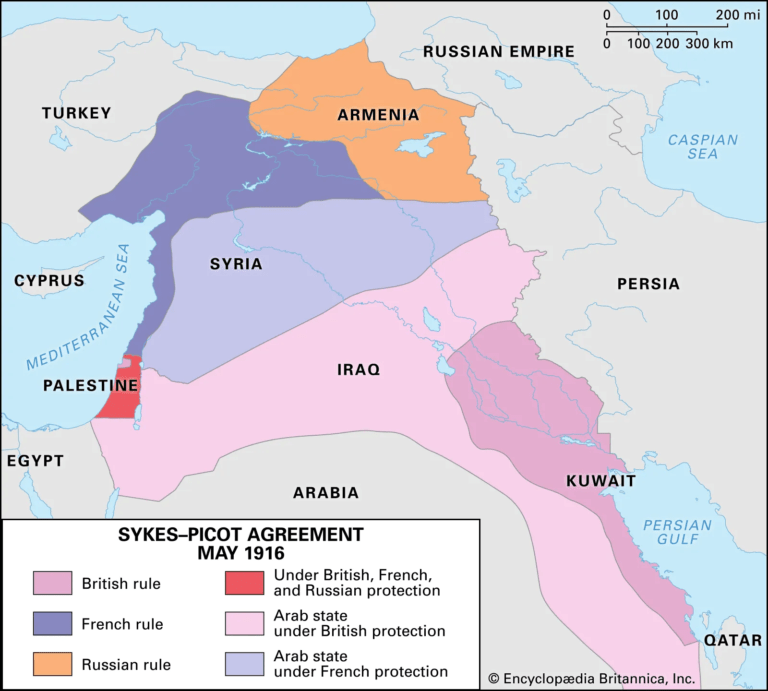
Initiation of the Two-Nation Theory:
The situation was further complicated in November 2017, when British Foreign Secretary Arthur Balfour wrote a letter to British Zionist leader and banker Lionel Walter Rothschild, expressing the British government’s support for a Jewish homeland in Palestine. It was intended, in part, to compel American Jews to use their clout to persuade America to embrace British postwar policies and to inspire Russian Jews to keep their country at war. In addition, they also wanted support from the Jewish community identifying Palestine as a strategically important area for the Suez Canal trade route.
By the end of 1917, while the war was still raging, the British had promised the Sharif an independent Arab nation, agreed to share a portion of the Arab province with their French allies, and openly supported the establishment of a Jewish homeland in the state of Palestine. Each of these parties believed that the British were sincerely supporting their separate causes because none of these agreements were made immediately public.
The Mandate for Palestine, a League of Nations Resolution:
The mandate for Palestine was approved by the League of Nations Council in July 1922 to give the former Ottoman Empire’s territory “administrative advice and assistance by a Mandatory until they are able to stand alone”. It included a preamble that incorporated the Balfour Declaration and emphasized the historical relationship between Palestine and the Jews.
Both Jews and Arabs understood that land ownership and population density would define the region’s future towards the end of the mandate period. Therefore, Jewish immigration and land purchases remained the primary concerns throughout the mandate period, with Jews trying to grow both and Arabs trying to reduce or stop both.
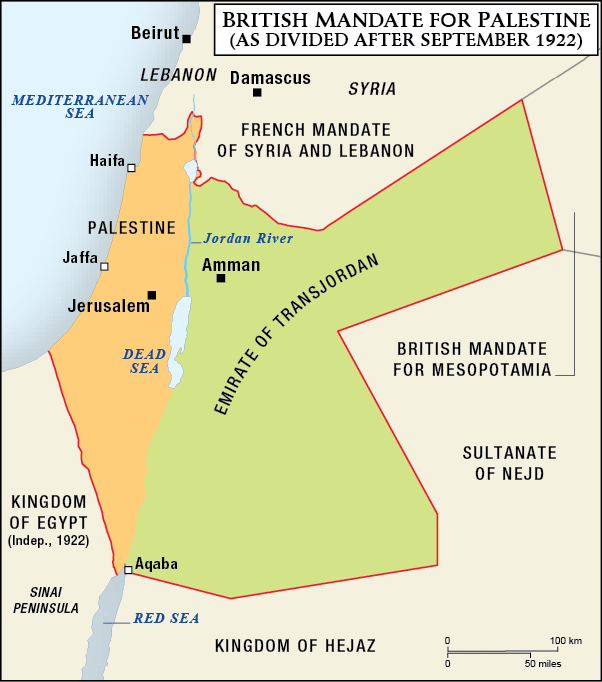
Jewish-Arab Conflict:
In Palestine, there were violent clashes between Jews and Arabs throughout the 1920s and 1930s, costing hundreds of lives. The Wailing Wall Riot (1929) was seen as a turning point in the history of both Jews and Arabs after which Arabs stopped making a distinction between Jews of Arab heritage and Jews of Eastern European background and instead saw them as a single homogenous community with similar national aspirations. On the other hand, Jewish communities understood that they needed to work together to accomplish the objective of their state.
Beginning in the early 1930s, developments in Europe once again started to exert a strong influence on Palestine. Jewish immigration increased significantly to 30 thousand in 1933, 42 thousand in 1934, and 61 thousand in 1935 as a result of the Nazi party’s rise to power in Germany in 1933 and the widespread persecution of Jews throughout central and eastern Europe. By 1936, the Jewish population of Palestine had reached almost 4 lac or one-third of the total.
The Arab population of Palestine also expanded quickly, largely by natural increase. In addition, some Arabs were also drawn in from outside the area by the money infusion brought by middle-class Jewish immigration and British public works.
By the middle of the 1930s, many landless Arabs had joined the rising Arab proletariat laboring in the construction trades on the outskirts of quickly expanding urban centers. This marked the start of a change in the economic and social pillars of Palestinian society. Arab political groups sought the establishment of democratic institutions, a halt to Jewish immigration, and a ban on property transfers in November 1935. Zionist and British products were declared to be boycotted.
The Arab Revolt of 1936-39:
The Arab Revolt was the first sustained violent uprising of Palestinian Arabs in more than a century, triggered by an economic crisis. This revolt had two phases.
A widespread strike and violent attacks on British and Jewish targets by the Arab community marked the beginning of the revolt in April 1936. It lasted until October 1936, when a ceasefire was reached as a result of diplomatic efforts involving other Arab nations. A Royal Commission of Inquiry headed by William Peel concluded that partitioning the land was inevitable because Palestine had two distinct societies with incompatible political aspirations.
The second phase of the revolt began in September 1937 after the Arab Higher Committee rejected the Peel conclusions. However, Arab society’s internal conflicts caused the rebellion to fail. In addition to Britain’s heavy-handed response, the Arab Higher Committee was disbanded after the riots and was deemed an illegal organization.
White Paper of 1939:
The British government released the White Paper of 1939 in reaction to the Arab Revolt. It stated that the Jewish national home should be established within an independent Palestinian state. 75 thousand Jews would be permitted to enter the country during the course of the following 5 years; after that, Arab “acquiescence” would be required for Jewish immigration. Only a few portions of Palestine would be open to Jewish land transfers, and an independent Palestinian state would be considered within 10 years.
Despite supporting the new strategy, the Arabs rejected this White Paper due to distrusting the British administration and a provision of extending the mandate beyond its initial 10-year term. This white paper also startled and infuriated the Zionists, who saw it as a fatal blow to their cause and to the Jews who were frantically looking for safety in Palestine due to the increasing persecution in Europe. The Anglo-Zionist entente came to an end with this 1939 White Paper.
World War II (WWII) and Its Consequences:
With the outbreak of World War II in September 1939, Zionist and British policies clashed head-on. On the verge of 6 million Jews targeted by the Holocaust, Zionists pushed for increased Jewish immigration to Palestine throughout the war, but the British opposed it as unlawful and a threat to the stability of a crucial war-producing territory. As a response, Zionists organized unauthorized immigration to Palestine increasing tensions with Arabs, which persisted up until the end of British control.
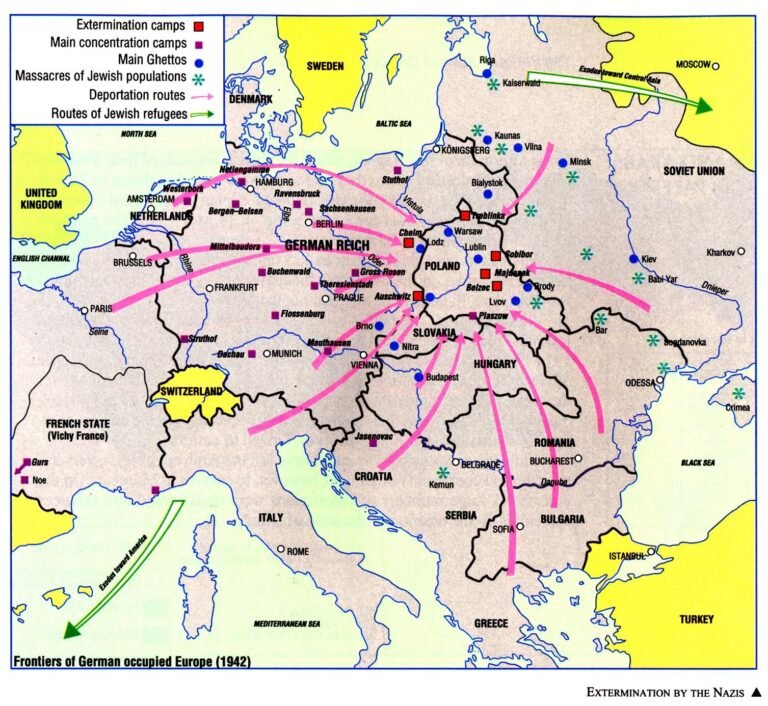
Overwhelmed by the situation, the British began their withdrawal from the area. The United Nations (UN) took over and proposed to divide the region into two states, with Jerusalem receiving a special status of an international zone. In Resolution 181, dated 29th November 1947, the UN General Assembly adopted these recommendations with a two-thirds majority. This decision was made possible, in part, by a partition agreement between the United States and the Soviet Union and, in part, by pressure from Zionist sympathizers in the United States on a few small nations. All the Islamic Asian nations voted against this partition.
A request from the Arabs to ask the International Court of Justice whether the General Assembly had the authority to divide a country against the views of the majority of its citizens was narrowly defeated. In 1946 there were 12.69 lac Arabs and 6.78 lac Jews in Palestine.
The partition plan was well received by the Zionists because it recognized a Jewish state and gave it a little more than half of the territory. Similar to 1937, the Arabs vehemently opposed partition on moral grounds and because nearly half of the population of the Jewish state would be Arab.
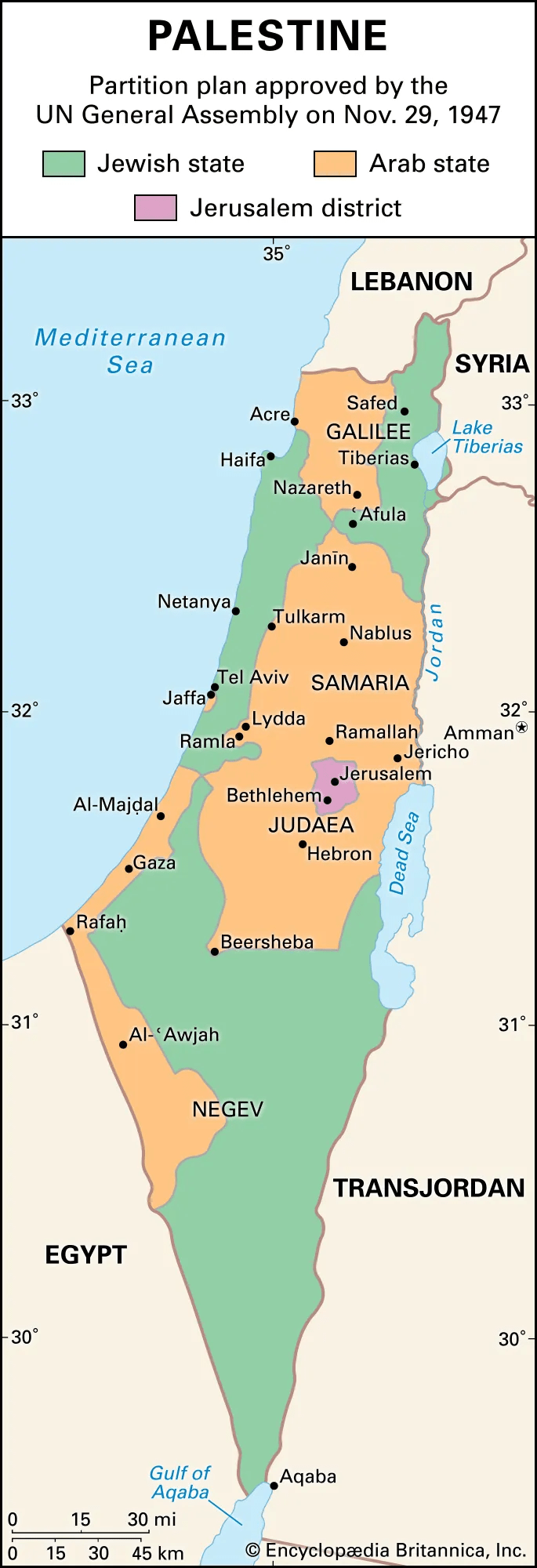
The Civil War in Palestine:
Conflict erupted in Palestine shortly after the UN resolution. The Zionists rallied their supporters and intensified their immigration-related initiatives. The Arab League established a militia and vowed help for the Palestinian Arabs in December 1947.
The United States stated its opposition to imposing a division through force after becoming alarmed by the ongoing conflict. On 30th March 1948, they suggested a cease-fire and urged the UN General Assembly to consider the issue further.
Being concerned with the shift in the US policy, the Zionists launched attacks in April and insisted that the partition was legally binding. They also launched a psychological warfare campaign besides their military offensives. The Arabs of Palestine, divided, badly led, and reliant on the regular armies of the Arab states, became demoralized, and their efforts to prevent partition collapsed.
The state of Israel:
On 14th May 1948, Britain completed its withdrawal from Palestine, while the Jews proclaimed the independence of the state of Israel. Within a few hours of this declaration, they won de facto recognition from the United States and de jure recognition from the Soviet Union.
In response, the Arab League declared war. During the conflict, 2 truces allowed the Israeli army to strengthen its position and gradually take over. Finally, the Armistice Agreements were signed. Israel ceded new territory including Western Jerusalem. Egypt received the Gaza Strip, and the West Bank was annexed from Transjordan to form Jordan.
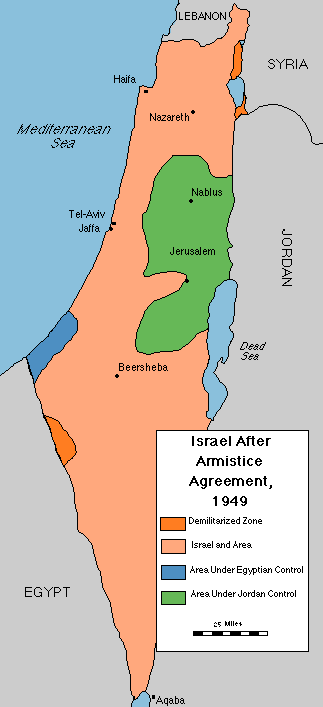
This conflict caused large-scale displacement. On the one hand, more than 7 lac Arabs were expelled or fled Israeli territory to refugee camps. On the other, Jewish communities in Arab countries, sometimes with a history of over two thousand years, are forced to take refuge in Israel or elsewhere in Europe. Eventually, many European Jews were reassured by the victory of Israel and choose to settle there.
